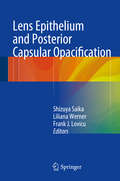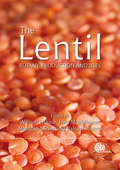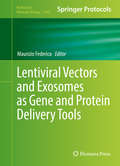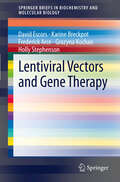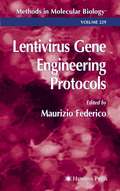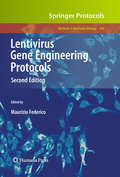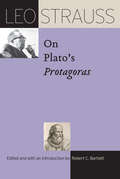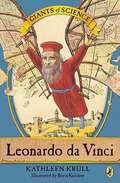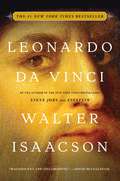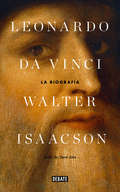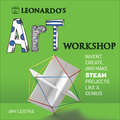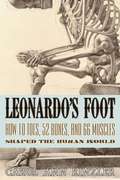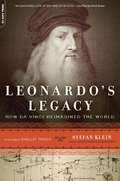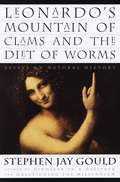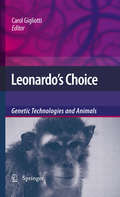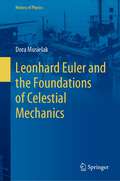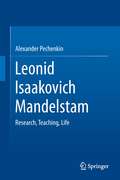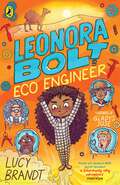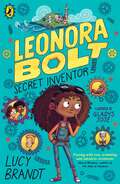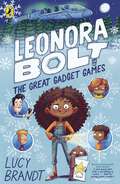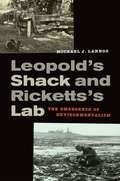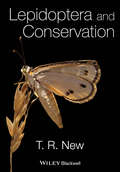- Table View
- List View
Lens Epithelium and Posterior Capsular Opacification
by Frank J. Lovicu Shizuya Saika Liliana WernerThis book is the first to summarize the current knowledge of the cell biology of lens epithelial cells in relation to and in the development of posterior capsular opacification (PCO). PCO remains the most common long-term complication of modern cataract surgery, occurring months or years after cataract surgery, unlike most other complications that tend to arise during or soon after the procedure. Opacification of the posterior capsule appears to be linked to lens epithelial cells that are left behind in the eye during cataract removal. These cells proliferate, migrate across the posterior lens capsule, and undergo changes that result in fibrous or pearl-type opacities in the capsule. The first section of the text explains the molecular mechanism and biology of lens epithelial cells that lead to the incidence of PCO. In the second part, in addition to a description of the mechanism and pathological condition of PCO, surgical methods and devices for preventing PCO are discussed in detail. Lens Epithelium and Capsular Opacification will benefit not only young clinical residents and junior researchers, but also established faculty in the clinical or basic academic field.
Lentil
by William Erskine Fred Muehlbauer Ashutosh Sarker Balram SharmaIn the last three decades, the global production of lentils has almost tripled due to larger harvest areas but also more importantly from progress in research and productivity. Chapters outline improvements in production, such as water and soil nutrient management, agronomy, mechanization and weed management. Developments in genetics and breeding are discussed alongside improved knowledge of the lentil's origin, domestication, morphology and adaptation. The implementation and impact of this new research at the farm level is also addressed as well as the crop's post-harvest processing and nutritional value.
Lentiviral Vectors and Exosomes as Gene and Protein Delivery Tools
by Maurizio FedericoThis volume provides current methods and protocols for gene and protein delivery based on both lentivirus-generated and spontaneously released nanovesicles. "Lentiviral Vectors and Exosomes as Gene and Protein Delivery Tools "guides readers through methods on macromolecule delivery and chapters describe the LV-based protocols of gene engineering. Written in the highly successful "Methods in Molecular Biology "series format, chapters include introductions to their respective topics, lists of the necessary materials and reagents, step-by-step, readily reproducible laboratory protocols, and tips on troubleshooting and avoiding known pitfalls. Authoritative and cutting-edge, "Lentiviral Vectors and Exosomes as Gene and Protein Delivery Tools" aims to ensure successful results in the further study of this vital field.
Lentiviral Vectors and Gene Therapy
by Frederick Arce David Escors Grazyna Kochan Karine Breckpot Holly StephensonGene therapy was conceived during the early and mid part of the 20th century. At first, it was considered a revolutionary biomedical procedure, which could potentially cure any disease for which the molecular bases were understood. Since then, gene therapy has gone through many stages and has evolved from a nearly unrealistic perspective to a real life application. Clinical efficacy in humans was demonstrated at the beginning of this century after its successful application in small-scale clinical trials to cure severe immunodeficiency in children. However, their successes were overshadowed some time later by the occurrence of vector-related leukaemia in a number of treated children. It is in this context that lentiviral vectors have appeared, with improved efficiency and, possibly, increased biosafety. Very recently, the first clinical trials with lentivectors have been carried out with some success. This Brief firstly defines gene therapy, and places lentivectors within this fascinating therapeutic strategy. Then follows a comprehensive description of the development of retroviral and lentiviral vectors and how to specifically target distinct cell types and tissues. The authors also discuss the application of lentivector gene therapy for the treatment of cancer and autoimmune diseases, ending with the application of lentivectors in human gene therapy clinical trials.
Lentivirus Gene Engineering Protocols
by Maurizio FedericoLentivirus vector-based technologies, through in vitro and in vivo gene transfer in eukaryotic animal cells, currently offer the most promising opportunities for curing genetic disorders, as well as cancer and infectious diseases. In Lentivirus Gene Engineering Protocols, Maurizio Federico has assembled a panel of outstanding experimenters to detail all the theoretical and practical aspects of lentivirus vector-based gene transfer. The authors demonstrate lentivirus vector production with detailed methods for recovering appropriate producer cells, for producing and titrating lentivirus-containing supernatants, and for detecting transduced cells. The applications of lentivirus vector engineering to different cell types include coverage of lymphocytes, dendritic cells, hematopoietic stem and progenitor cells, mesenchymal stem cells, hippocampal neurons, cardiomyocytes, as well as airway epithelia, corneal cells, and retinal pigment. The use of non-HIV-1-based lentivirus vectors is shown to be advantageous, particularly those obtained from the genomes of HIV-2, SIV, or FIV. Also advanced are applications in which genetic material is directly inoculated with lentivirus vectors in such experimental animal models as mouse, rat, and rabbit. <P><P> Comprehensive and informative, Lentivirus Gene Engineering Protocols presents a broad spectrum of the latest methods of lentivirus vector technology, offering hematologists, neurologists, geneticists, and virologists the most promising and up-to-date tools available for gene therapy in such still fatal diseases as cancer, cystic fibrosis, and AIDS.ctical aspects of lentivirus vector-based gene transfer. The authors demonstrate lentivirus vector production with methods for recovering appropriate producer cells, for producing and titrating lentivirus-containing supernatants, and for detecting transduced cells. The applications of lentivirus vector engineering to different cell types include coverage of lymphocytes, dendritic cells, hematopoietic stem and progenitor cells, mesenchymal stem cells, hippocampal neurons, cardiomyocytes, as well as airway epithelia, corneal cells, and retinal pigment. Also advanced are applications in which genetic material is directly inoculated with lentivirus vectors in such experimental animal models as mouse, rat, and rabbit.
Lentivirus Gene Engineering Protocols, 2nd Edition
by Maurizio FedericoSince the publication of the first edition, lentivirus vector-based technologies, through in vitro and in vivo gene transfer in eukaryotic animal cells, continue to offer the most promising opportunities for curing genetic disorders, as well as cancer and infectious diseases. Lentivirus Gene Engineering Protocols, Second Edition reflects the spectacular progress made in the field with a set of cutting-edge methods contributed by highly respected scientists. Beginning with a thorough overview of the most recent lentivirus developments, the book continues with detailed protocols including sections on the advances in lentiviral vector technology, new lentiviral vector applications, involving transgenic human embryonic stem cells and fetal gene therapy among other topics, as well as the invaluable breakthroughs in LV-mediated expression of microRNAs. Written in the highly successful Methods in Molecular Biology™ series format, chapters include introductions to their respective subjects, lists of the necessary materials and reagents, step-by-step, readily reproducible laboratory protocols, and notes sections, highlighting tips on troubleshooting and avoiding known pitfalls.<P><P> Authoritative and timely, Lentivirus Gene Engineering Protocols, Second Edition covers the most relevant issues and techniques of LV-based gene engineering, thus representing a complete theoretical and practical guide for scientists still unfamiliar with LV technologies and those who simply wish to know more about this vital area of study.
Leo Strauss on Plato’s Protagoras (The Leo Strauss Transcript Series)
by Leo StraussA transcript of Leo Strauss’s key seminars on Plato’s Protagoras. This book offers a transcript of Strauss’s seminar on Plato’s Protagoras taught at the University of Chicago in the spring quarter of 1965, edited and introduced by renowned scholar Robert C. Bartlett. These lectures have several important features. Unlike his published writings, they are less dense and more conversational. Additionally, while Strauss regarded himself as a Platonist and published some work on Plato, he published little on individual dialogues. In these lectures Strauss treats many of the great Platonic and Straussian themes: the difference between the Socratic political science or art and the Sophistic political science or art of Protagoras; the character and teachability of virtue, its relation to knowledge, and the relations among the virtues, courage, justice, moderation, and wisdom; the good and the pleasant; frankness and concealment; the role of myth; and the relation between freedom of thought and freedom of speech. In these lectures, Strauss examines Protagoras and the sophists, providing a detailed discussion of Protagoras as it relates to Plato’s other dialogues and the work of modern thinkers. This book should be of special interest to students both of Plato and of Strauss.
Leonardo da Vinci
by Kathleen KrullLeonardo da Vinci's notebooks are mind-boggling evidence of a fifteenth-century scientific genius standing at the edge of the modern world, basing his ideas on observation and experimentation. This book will change children's ideas of who Leonardo was and what it means to be a scientist. .
Leonardo da Vinci
by Walter Isaacson<P>He was history’s most creative genius. What secrets can he teach us? The author of the acclaimed bestsellers Steve Jobs, Einstein, and Benjamin Franklin brings Leonardo da Vinci to life in this exciting new biography. <P>Based on thousands of pages from Leonardo’s astonishing notebooks and new discoveries about his life and work, Walter Isaacson weaves a narrative that connects his art to his science. He shows how Leonardo’s genius was based on skills we can improve in ourselves, such as passionate curiosity, careful observation, and an imagination so playful that it flirted with fantasy. He produced the two most famous paintings in history, The Last Supper and the Mona Lisa. But in his own mind, he was just as much a man of science and technology. <P>With a passion that sometimes became obsessive, he pursued innovative studies of anatomy, fossils, birds, the heart, flying machines, botany, geology, and weaponry. His ability to stand at the crossroads of the humanities and the sciences, made iconic by his drawing of Vitruvian Man, made him history’s most creative genius. His creativity, like that of other great innovators, came from having wide-ranging passions. He peeled flesh off the faces of cadavers, drew the muscles that move the lips, and then painted history’s most memorable smile. He explored the math of optics, showed how light rays strike the cornea, and produced illusions of changing perspectives in The Last Supper. <P>Isaacson also describes how Leonardo’s lifelong enthusiasm for staging theatrical productions informed his paintings and inventions. Leonardo’s delight at combining diverse passions remains the ultimate recipe for creativity. So, too, does his ease at being a bit of a misfit: illegitimate, gay, vegetarian, left-handed, easily distracted, and at times heretical. His life should remind us of the importance of instilling, both in ourselves and our children, not just received knowledge but a willingness to question it—to be imaginative and, like talented misfits and rebels in any era, to think different. <P><b>A New York Times Bestseller</b>
Leonardo da Vinci: La biografía
by Walter IsaacsonEl aclamado autor de los best sellers Steve Jobs y Einstein nos vuelve a cautivar con la vida del genio más creativo de la historia en esta fascinante biografía. Basándose en las miles de páginas de los cuadernos manuscritos de Leonardo y nuevos descubrimientos sobre su vida y su obra, Walter Isaacson teje una narración que conecta el arte de Da Vinci con sus investigaciones científicas, y nos muestra cómo el genio del hombre más visionario de la historia nació de habilidades que todos poseemos y podemos estimular, tales como la curiosidad incansable, la observación cuidadosa y la imaginación juguetona. Su creatividad, como la de todo gran innovador, resultó de la intersección entre la tecnología y las humanidades. Despellejó y estudió el rostro de numerosos cadáveres, dibujó los músculos que configuran el movimiento de los labios y pintó la sonrisa más enigmática de la historia, la de la Mona Lisa. Exploró las leyes de la óptica, demostró como la luz incidía en la córnea y logró producir esa ilusión de profundidad en la Última cena. La habilidad de Leonardo da Vinci para combinar arte y ciencia -esplendorosamente representada en el Hombre de Vitruvio- continúa siendo la regla de oro de la innovación. La apasionante vida de este gran hombre debe recordarnos la importancia de inculcar el conocimiento, pero sobre todo la voluntad contagiosa de cuestionarlo: ser imaginativos y pensar de manera diferente.
Leonardo da Vinci: La biografía
by Walter IsaacsonEl aclamado autor de los best sellers Steve Jobs y Einstein nos vuelve a cautivar con la vida del genio más creativo de la historia en esta fascinante biografía. Basándose en las miles de páginas de los cuadernos manuscritos de Leonardo y nuevos descubrimientos sobre su vida y su obra, Walter Isaacson teje una narración que conecta el arte de Da Vinci con sus investigaciones científicas, y nos muestra cómo el genio del hombre más visionario de la historia nació de habilidades que todos poseemos y podemos estimular, tales como la curiosidad incansable, la observación cuidadosa y la imaginación juguetona. Su creatividad, como la de todo gran innovador, resultó de la intersección entre la tecnología y las humanidades. Despellejó y estudió el rostro de numerosos cadáveres, dibujó los músculos que configuran el movimiento de los labios y pintó la sonrisa más enigmática de la historia, la de la Mona Lisa. Exploró las leyes de la óptica, demostró como la luz incidía en la córnea y logró producir esa ilusión de profundidad en la Última cena. La habilidad de Leonardo da Vinci para combinar arte y ciencia -esplendorosamente representada en el Hombre de Vitruvio- continúa siendo la regla de oro de la innovación. La apasionante vida de este gran hombre debe recordarnos la importancia de inculcar el conocimiento, pero sobre todo la voluntad contagiosa de cuestionarlo: ser imaginativos y pensar de manera diferente.
Leonardo's Art Workshop: Invent, Create, and Make Steam Projects Like a Genius (Leonardo's Workshop)
by Amy LeidtkeLeonardo’s Art Workshop leads children on an interactive adventure through key art concepts by following the multidisciplinary approach of the Renaissance period polymath Leonardo da Vinci: experimenting, creating projects, and exploring how art intersects with science and nature. Photos of Leonardo’s own notebooks, paintings, and drawings provide visual inspiration. More than 500 years ago, Leonardo knew that the fields of science, technology, engineering, art, and mathematics (STEAM) are all connected. The insatiably curious Leonardo examined not just the outer appearance of his art subjects, but the science that explained them. He began his studies as a painter, but his curiosity, diligence, and genius made him also a master sculptor, architect, designer, scientist, engineer, and inventor. The Leonardo’s Workshop series shares this spirit of multidisciplinary inquiry with children through accessible, engaging explanations and hands-on learning. Following Leonardo’s example, this fascinating book harnesses children’s innate curiosity to explore the foundational elements of art—color, shadow and light, lines and patterns, forms and structures, and optics and special effects—and the science behind them. After each concept is explained using science, history, and real-world examples, kids can experience the principles first-hand with step-by-step STEAM projects, including: ·Create paints and dyes from food ·Harness a rainbow with a prism ·Build a camera obscura ·Make your own sundial ·Practice blind contour drawing ·Create a one-point perspective drawing ·Make an infinity scopeInsight from other great artists and scientists—such as Sir Isaac Newton, Sandro Botticelli, Paul Klee, and Leonardo Pisano Fibonacci—are woven into the lessons throughout. Introduce vital STEAM skills through visually rich, hands-on learning with Leonardo’s Art Workshop.
Leonardo's Foot
by Carol Ann RinzlerA Selection of the Scientific American, History, and BOMC2 Book Clubs"An in-depth look at the anatomy and history of feet reveals their often overlooked importance in human evolution, medicine and art." -Science News"Stylish, informative, entertaining, and pleasantly personal . . . Whether Rinzler is exploring how our feet explain or illuminate such topics as evolution, disability, racism, diet, or desire, she maintains a fascinating perspective on the peculiarities of being human." -Rain Taxi Review of Books"This neat little book draws a clear picture of our feet, providing understanding that extends far beyond the obvious. Readers often like to walk away from a book feeling they learned something-that the author left them with a new way to look at an old idea, and this book fulfills that need." -City Book Review"Rinzler lifts the lowly human foot to new heights in this appealing book." -Booklist (starred review)Leonardo's Foot stretches back to the fossil record and forward to recent discoveries in evolutionary science to demonstrate that it was our feet rather than our brains that first distinguished us from other species within the animal kingdom. Taking inspiration from Leonardo da Vinci's statement that "the human foot is a masterpiece of engineering and a work of art," Carol Ann Rinzler leads us on a fascinating stroll through science, medicine, and culture to shed light on the role our feet have played in the evolution of civilization.Whether discussing the ideal human form in classical antiquity, the impressive depth of the arching soles on the figures in Sandro Botticelli's Birth of Venus, an array of foot maladies and how they have affected luminaries from Lord Byron to Benjamin Franklin, or delving into the history of foot fetishism, Rinzler has created a wonderfully diverse catalog of details on our lowest extremities. This is popular science writing at its most entertaining-page after page of fascinating facts, based around the playful notion that appreciating this often overlooked part of our body is essential to understanding what it is to be human.Carol Ann Rinzler, a former nutrition columnist for the New York Daily News, has contributed to a number of publications, including the New York Times. She is the author of more than twenty books on health and medicine, including Nutrition for Dummies, an international bestseller translated into fourteen languages.
Leonardo's Legacy: How Da Vinci Reimagined the World
by Stefan KleinRevered today as, perhaps, the greatest of Renaissance painters, Leonardo da Vinci was a scientist at heart. The artist who created theMona Lisaalso designed functioning robots and digital computers, constructed flying machines and built the first heart valve. His intuitive and ingenious approach-a new mode of thinking-linked highly diverse areas of inquiry in startling new ways and ushered in a new era. InLeonardo’s Legacy, award-winning science journalist Stefan Klein deciphers the forgotten legacy of this universal genius and persuasively demonstrates that today we have much to learn from Leonardo’s way of thinking. Klein sheds light on the mystery behind Leonardo’s paintings, takes us through the many facets of his fascination with water, and explains the true significance of his dream of flying. It is a unique glimpse into the complex and brilliant mind of this inventor, scientist, and pioneer of a new world view, with profound consequences for our times.
Leonardo's Mountain of Clams and the Diet of Worms: Essays on Natural History
by Stephen Jay Gould"Leonardo's Mountain of Clams and the Diet of Worms" is the newest collection of best-selling scientist Stephen Jay Gould's popular essays from Natural History magazine (the longest-running series of scientific essays in history). It is also the first of the final three such collections, since Dr. Gould has announced that the series will end with the turn of the millennium. In this collection, Gould consciously and unconventionally formulates a humanistic natural history, a consideration of how humans have learned to study and understand nature, rather than a history of nature itself. With his customary brilliance, Gould examines the puzzles and paradoxes great and small that build nature's and humanity's diversity and order. In affecting short biographies, he depicts how scholars grapple with problems of science and philosophy as he illuminates the interaction of the outer world with the unique human ability to struggle to understand the whys and wherefores of existence.
Leonardo’s Choice
by Carol GigliottiLeonardo's Choice: Genetic Technologies and Animals is an edited collection of twelve essays and one dialogue focusing on the profound affect the use of animals in biotechnology is having on both humans and other species. Communicating crucial understandings of the integrated nature of the human and non-human world, these essays, unlike the majority of discussions of biotechnology, take seriously the impact of these technologies on animals themselves. This collection's central questions revolve around the disassociation Western ideas of creative freedom have from the impacts those ideas and practices have on the non-human world. This transdisciplinary collection includes perspectives from the disciplines of philosophy, cultural theory, art and literary theory, history and theory of science, environmental studies, law, landscape architecture, history, and geography. Included authors span three continents and four countries. Included essays contribute significantly to a growing scholarship surrounding "the question of the animal" emanating from philosophical, cultural and activist discourses. Its authors are at the forefront of the growing number of theorists and practitioners across the disciplines concerned with the impact of new technologies on the more-than-human world.
Leonhard Euler
by Ronald S. CalingerThis is the first full-scale biography of Leonhard Euler (1707-83), one of the greatest mathematicians and theoretical physicists of all time. In this comprehensive and authoritative account, Ronald Calinger connects the story of Euler's eventful life to the astonishing achievements that place him in the company of Archimedes, Newton, and Gauss. Drawing chiefly on Euler's massive published works and correspondence, which fill more than eighty volumes so far, this biography sets Euler's work in its multilayered context--personal, intellectual, institutional, political, cultural, religious, and social. It is a story of nearly incessant accomplishment, from Euler's fundamental contributions to almost every area of pure and applied mathematics--especially calculus, number theory, notation, optics, and celestial, rational, and fluid mechanics--to his advancements in shipbuilding, telescopes, ballistics, cartography, chronology, and music theory.The narrative takes the reader from Euler's childhood and education in Basel through his first period in St. Petersburg, 1727-41, where he gained a European reputation by solving the Basel problem and systematically developing analytical mechanics. Invited to Berlin by Frederick II, Euler published his famous Introductio in analysin infinitorum, devised continuum mechanics, and proposed a pulse theory of light. Returning to St. Petersburg in 1766, he created the analytical calculus of variations, developed the most precise lunar theory of the time that supported Newton's dynamics, and published the best-selling Letters to a German Princess--all despite eye problems that ended in near-total blindness. In telling the remarkable story of Euler and how his achievements brought pan-European distinction to the Petersburg and Berlin academies of sciences, the book also demonstrates with new depth and detail the central role of mathematics in the Enlightenment.Some images inside the book are unavailable due to digital copyright restrictions.
Leonhard Euler and the Foundations of Celestial Mechanics (History of Physics)
by Dora MusielakThe intention of this book is to shine a bright light on the intellectual context of Euler’s contributions to physics and mathematical astronomy. Leonhard Euler is one of the most important figures in the history of science, a blind genius who introduced mathematical concepts and many analytical tools to help us understand and describe the universe. Euler also made a monumental contribution to astronomy and orbital mechanics, developing what he called astronomia mechanica. Orbital mechanics of artificial satellites and spacecraft is based on Euler’s analysis of astromechanics. However, previous books have often neglected many of his discoveries in this field. For example, orbital mechanics texts refer to the five equilibrium points in the Sun-Earth-Moon system as Lagrange points, failing to credit Euler who first derived the differential equations for the general n-body problem and who discovered the three collinear points in the three-body problem of celestial mechanics. These equilibrium points are essential today in space exploration; the James Webb Space Telescope (successor to the Hubble), for example, now orbits the Sun near L2, one of the collinear points of the Sun-Earth-Moon system, while future missions to study the universe will place observatories in orbit around Sun-Earth and Earth-Moon equilibrium points that should be properly called Euler-Lagrange points. In this book, the author uses Euler’s memoirs, correspondence, and other scholarly sources to explore how he established the mathematical groundwork for the rigorous study of motion in our Solar System. The reader will learn how he studied comets and eclipses, derived planetary orbits, and pioneered the study of planetary perturbations, and how, old and blind, Euler put forward the most advanced lunar theory of his time.
Leonid Isaakovich Mandelstam
by Alexander PechenkinThis biography of the famous Soviet physicist Leonid Isaakovich Mandelstam (1889-1944), who became a Professor at Moscow State University in 1925, describes his contributions to both physics and technology, as well as discussing the scientific community which formed around him, usually called the Mandelstam school. Mandelstam's life story is thereby placed in its proper cultural context. The following more general issues are taken under consideration: the impact of German scientific culture on Russian science; the problems and fates of Russian intellectuals during the revolutionary and post-revolutionary years; the formation of the Soviet Academy of Sciences; and transformation of the system of higher education in the USSR during the 1920's and 1930's. The author shows that Mandelstam's fundamental writings and his lectures notes allow to reconstruct his philosophy of science and his approach to the social and ethical functions of science and science education. That reconstruction is enhanced through extensive use of hitherto unpublished archival material as well as the transcripts of personal interviews conducted by the author.
Leonora Bolt: Deep Sea Calamity (Leonora Bolt: Secret Inventor #2)
by Lucy BrandtTHE SECOND LAUGH-OUT-LOUD ADVENTURE FOR LEONORA BOLT, SECRET INVENTOR.'Fizzing with fun, friendship and fabulous inventions!' - Maria Kuzniar, The Ship of Shadows Leonora isn't supposed to be building a submarine in a tree. Or turning the local wildlife luminous. In fact, she is supposed to be keeping her head down and drawing no attention - because Leonora Bolt is an inventor in secret.But she can't stop thinking of the clues she found to her missing parents' location. So, deep in hiding in Snorebury, desperately trying to avoid being discovered by her evil uncle, Leonora is hatching a plan.So what if involves launching a homemade submarine into the middle of the ocean, accompanied only by a couple of friends and an otter with particularly sensitive whiskers? For when disaster strikes, Leonora's wackiest plan might just be her most brilliant yet...
Leonora Bolt: Eco Engineer (Leonora Bolt: Secret Inventor #3)
by Lucy BrandtBook 3 in the LEONORA BOLT: SECRET INVENTOR seriesLeonora Bolt makes amazing gadgets from any old junk. And her inventions have already stopped villainous Uncle Luther TWICE, though she hasn't rescued her super-scientist parents from him - yet.Leonora and her pals find clues that lead them to Luther's latest evil plan. It's an amusement park called Brightworld built in a desert, under a massive snow globe - and it's terrible for the environment!But when all their fancy-pants gadgets fail in the hot-hot heat, it's down to Leonora to use her eco-engineering imagination. Can she invent something to shut down Brightworld and save her parents - before there's a meltdown?With nothing but courage and Leonora's trusty tool belt to hand, the gang must battle swirling sandstorms, navigate plunging canyons and finish Uncle Luther...FOD GOOD!Praise for LEONORA BOLT:'A hilariously silly adventure' - The Guardian'Fizzing with fun, friendship and fabulous inventions!' - Maria Kuzniar, author of The Ship of Shadows'A joyous story' - i
Leonora Bolt: Secret Inventor (Leonora Bolt: Secret Inventor #1)
by Lucy Brandt'Fizzing with fun, friendship and fabulous inventions!' - Maria KuzniarWARNING: EPIC INVENTIONS AND SECRET SOCIETIES AHEAD . . .Leonora Bolt spends her days creating incredible inventions in her TOP SECRET laboratory, under the watchful eye of her terrifying uncle.Everything changes one day when a strange boy washes up on an inflatable lobster and reveals that Uncle Luther has been stealing her inventions and selling them on the mainland. Leonora, armed with her most important inventions, must leave Crabby Island for the first time EVER to embark on an unforgettable journey that will test her brainpower to its limits.With the help of an otter with a special skilll, a questionable cook and a singing sea captain, can Leonora dream up an invention that will defeat her evil uncle once and for all?Violet Baudelaire meets Peanut Jones in this epic STEM-themed adventure about believing in your brainpower - and yourself!
Leonora Bolt: The Great Gadget Games (Leonora Bolt: Secret Inventor #4)
by Lucy BrandtThe fourth hilarious book in the brilliant STEM adventure series Leonora Bolt. With glorious illustrations by Gladys Jose throughout.It's Leonora first Christmas, and the brilliant young inventor is feeling festive! She's made presents, Mildred's boiling cabbage for the candy canes (yuck!), and best friend Jack's brought along . . .an invite to the Great Gadget Games?!Her villainous Uncle Luther is behind this new inventing show, and planning on stealing the creations made by the very talented contestants. And in ANOTHER twist, the judges of the competition are two people very dear to Leonora's heart.Leonora HAS to enter - it's her best-ever chance to finally stop Luther's dangerous games! But she can't enter as herself - he'll never allow that - so she'll need a foolproof disguise, and a brilliant idea for a winning invention . . .Violet Baudelaire meets Peanut Jones in this epic STEM-themed adventure about believing in your brainpower - and yourself.
Leopold’s Shack and Ricketts’s Lab: The Emergence of Environmentalism
by Michael J. LannooAldo Leopold and Ed Ricketts are giants in the history of environmental awareness. This illuminating book reveals the full extent of their profound and parallel influence both on science and our perception of natural world today.
Lepidoptera and Conservation
by T. R. NewThe third in a trilogy of global overviews of conservation of diverse and ecologically important insect groups. The first two were Beetles in Conservation (2010) and Hymenoptera and Conservation (2012). Each has different priorities and emphases that collectively summarise much of the progress and purpose of invertebrate conservation. Much of the foundation of insect conservation has been built on concerns for Lepidoptera, particularly butterflies as the most popular and best studied of all insect groups. The long-accepted worth of butterflies for conservation has led to elucidation of much of the current rationale of insect species conservation, and to definition and management of their critical resources, with attention to the intensively documented British fauna ‘leading the world’ in this endeavour. In Lepidoptera and Conservation, various themes are treated through relevant examples and case histories, and sufficient background given to enable non-specialist access. Intended for not only entomologists but conservation managers and naturalists due to its readable approach to the subject.
